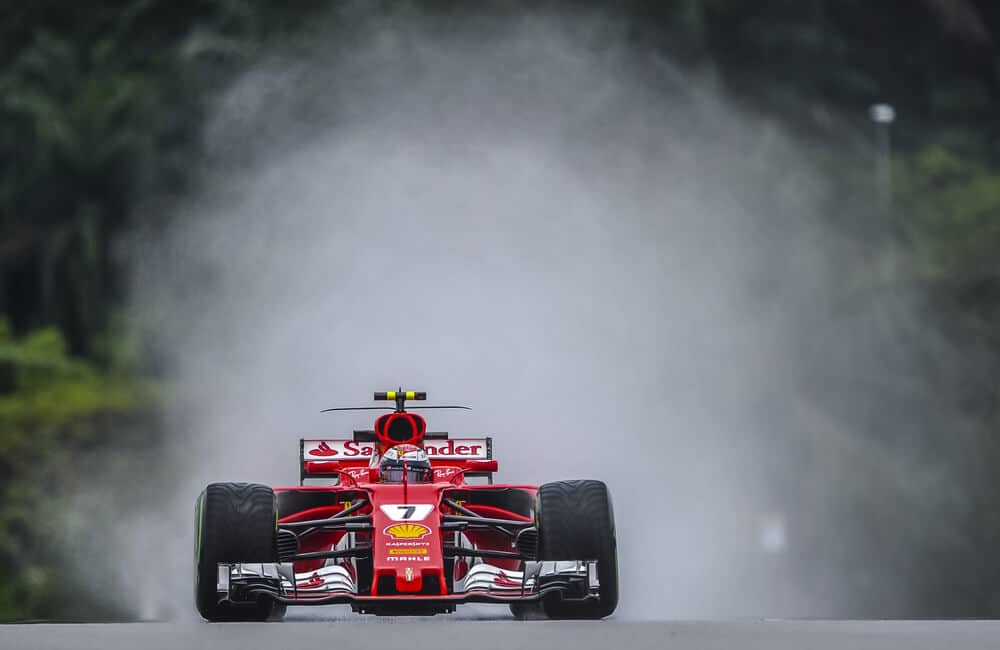Formula 1, the pinnacle of motorsport, is a realm where cutting-edge engineering and aerodynamic innovations converge. Among these innovations, “ground effect” stands as a monumental achievement that has significantly impacted the sport. In this comprehensive guide, we delve into the intricate world of ground effect technology, shedding light on its history, mechanics, and profound influence on Formula 1 racing.
What is Ground Effect? Ground effect, a revolutionary aerodynamic concept, involves manipulating the airflow underneath a Formula 1 car to generate downforce. This downforce, which presses the car onto the track, enhances traction, stability, and overall performance, especially during high-speed cornering.
Evolution and Historical Significance: Introduced in the late 1970s, ground effect technology transformed Formula 1 racing. Pioneered by teams like Lotus, the concept led to a quantum leap in cornering speeds and paved the way for iconic victories. This technology’s zenith was witnessed in the Lotus 79, an aerodynamic marvel that dominated the 1978 season.
Mechanics Behind Ground Effect

The heart of ground effect lies in the underbody of the car. Ingeniously shaped tunnels, referred to as “venturi tunnels,” channel airflow underneath, creating an area of low pressure.
This difference in pressure effectively “sucks” the car towards the track, generating substantial downforce. This not only aids in maintaining grip but also minimizes drag, boosting straight-line speeds.
Challenges and Regulation with Ground Effect
While ground effect brought unprecedented performance gains, it also posed challenges. Cars became highly sensitive to changes in ride height, potentially leading to dangerous situations.
In response, regulations were imposed to ensure safety and fair competition. Ground effect was partially banned in the mid-1980s, emphasizing flat underbodies to limit downforce generation.
The Era of Advancement
The late 1970s marked a transformative phase in Formula 1 with the introduction of ground effects. Spearheaded by the Lotus 78 and its successor, the 79, this era saw remarkable progress.
The Lotus 79 generated significant downforce – 200 pounds from the rear wings and 100 pounds from the front at 150mph – setting it apart from competitors.
Referred to as the ‘golden era,’ the Lotus 79 dominated, prompting teams like McLaren and Brabham to innovate, as seen in the BT46B with its pioneering rear fan. Despite early success, the fan was swiftly banned after one race.
The era concluded in 1982 with new FIA regulations outlawing flat undercarriages. Today, after four decades, ground effect aerodynamics have resurfaced, promising even more astonishing outcomes!
Safety Measures
The introduction of ground effects revolutionized Formula 1 but brought inherent dangers. Due to accidents resulting from their use, the FIA banned them in 1982 for safety.
Tragic incidents involving Ronnie Peterson, Patrick Depailler, and Gilles Villeneuve led to this decision. Skirts were introduced to regulate air pressure beneath cars, but track irregularities often caused instability, like René Arnoux’s near-crowd crash in 1980 and Didier Pironi’s collision with Alain Prost’s Renault in 1982.
Recognizing the need for enhanced safety, skirts were prohibited from 1983 onward. Cars transitioned to flat bottoms, reducing downforce and minimizing airborne risks. While cornering speeds decreased, safety standards in Formula 1 significantly improved.
Revived Technology
Ground effects, once banned in 1982 for safety reasons, have returned to Formula 1 thanks to modern progress and technological innovations.
Recent regulations, effective from 2022 onwards, maintain safety as a priority by replacing the iconic 80s skirts with small aerodynamic components on the sides. These elements aid in sealing the underfloor.
Moreover, modern circuits prioritize safety with ample run-off areas, enhanced safety barriers, and each car equipped with a wooden plank on its floor. This measure prevents sudden downforce loss if the car encounters bumps or potholes.
The smoother, progressive floor design now emphasizes ground effect-generated downforce over reliance on wings.
Modern Interpretations of Ground Effect
Though thetechnology was curtailed, its principles continue to influence modern Formula 1 designs. From the 2022 season the regulations required the teams to employ ground effect in the car design.
Some teams, such as Red Bull got it right while others, like Mercedes faced severe difficulties, and the car lost downforce, was subject to Porpoising and had a slower straight-line speed.
Teams employ intricate aerodynamic elements, including diffusers and side pods, to enhance underbody airflow and generate downforce.
This modern interpretation strikes a balance between performance and safety, shaping the contemporary Formula 1 landscape.
Conclusion
Formula 1’s ground effect remains a defining chapter in motorsport history, showcasing the relentless pursuit of innovation. From its awe-inspiring origins to its evolution and regulation, this groundbreaking technology redefined the limits of speed and grip.
As Formula 1 marches forward, the legacy of ground effect continues to inspire advancements that shape the future of racing.

